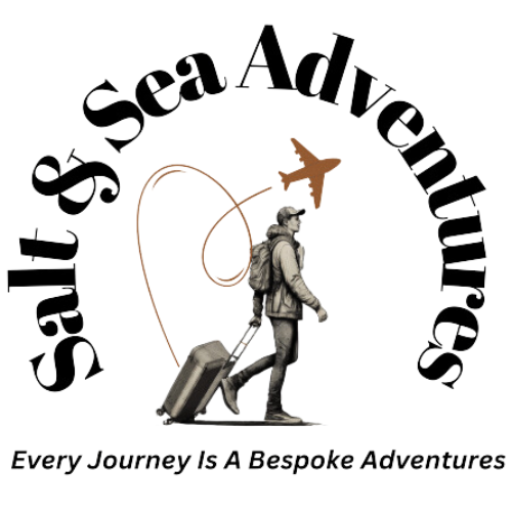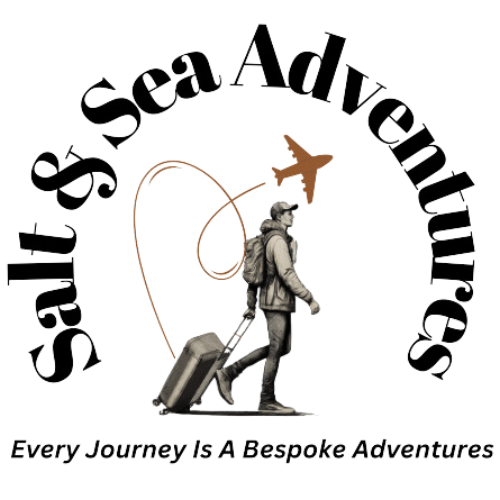"Morocco was an unforgettable experience! The bustling souks of Marrakech and the vibrant Jemaa el-Fnaa square were unlike anything I’ve ever seen. We spent hours shopping for spices, textiles, and unique souvenirs. The highlight of our trip was a camel ride in the Sahara Desert – it felt magical to watch the sunset over the dunes. The people were incredibly warm and welcoming. Morocco's combination of rich history, culture, and natural beauty made this an incredible journey. I can't wait to visit again!"
- Home
- About Us
- International
- Africa
- America
- Asia
- Australia & New Zealand
- Europe
- Middle East
AfricaEgypt
Mauritius
Zimbabve
AmericaAsiaAustralia & New ZealandEuropeCentral and Eastern Europe
Highlights
Mediterranean Europe
Middle East - Domestic
- North India
- South India
- East and North East
- Rajasthan, West and Central
North IndiaDelhi
Himachal Pradesh
Uttarakhand
Amritsar
Chandigarh
Punjab & Haryana
Uttar Pradesh
South IndiaAndaman and Nicobar Islands
Kerela
Andhra Pradesh
Tamil Nadu
East and North EastAssam
Nagaland
Tripura
Meghalaya
Rajasthan, West and Central - Temple Darshan
- Group Booking
- Blogs
- Contact Us
Sights

Explore Morocco
Morocco is a vibrant North African country known for its rich history, diverse landscapes, and unique blend of cultures. From the bustling markets and historic palaces of cities like Marrakech and Fes to the vast, tranquil sands of the Sahara Desert, Morocco offers a mix of ancient traditions and modern influences. The country is famous for its stunning architecture, including intricate mosques and kasbahs, as well as its delicious cuisine, which includes dishes like tagine and couscous. Visitors can explore the Atlas Mountains, wander through colorful souks, and enjoy the warmth and hospitality of the Moroccan people. Whether you’re interested in history, adventure, or culture, Morocco offers a unique and unforgettable experience.
Places You'll See





Tour Highlights
- Well planned Tour itinerary.
- Kitchen as per our own convenience.
- Best hotels through out the tour.
- Unique tour of Scenic Beauty
- Stay in destinations that have proper facilities like hospitals, Market.
- Our groups are scheduled back to back, which is very helpful.
Tour Itinerary
Morocco
Days Plan
- Arrival: Arrive at Marrakech Menara Airport and transfer to your hotel or riad (traditional Moroccan guesthouse).
- Morning: After check-in, take a relaxed walk around the famous Jemaa el-Fnaa square, which comes alive with street performers, food stalls, and local vendors.
- Afternoon: Visit the Koutoubia Mosque (the largest mosque in Marrakech) and Bahia Palace, a beautiful example of Moroccan architecture with lush gardens and intricate details.
- Evening: Enjoy a traditional Moroccan dinner at a local restaurant. You can try tagine or couscous, and end the evening with a visit to the lively square again to see it lit up at night.
- Morning: Visit the Majorelle Garden and Yves Saint Laurent Museum. The vibrant blue gardens are a beautiful contrast to the city’s bustling atmosphere.
- Afternoon: Explore the Saadian Tombs, a historical site that dates back to the 16th century. Then, take a stroll through the Medina (old town), and visit the famous Souks (markets) where you can buy local handicrafts, spices, and textiles.
- Evening: For a truly unique experience, dine at a traditional Moroccan riad and enjoy local dishes like pastilla or mint tea while listening to live music.
- Morning: Depart early for a scenic drive through the Atlas Mountains (approx. 3 hours from Marrakech). The road to the mountains offers stunning views of valleys, Berber villages, and dramatic landscapes.
- Afternoon: Visit Ait Benhaddou, a UNESCO World Heritage site famous for its ancient kasbahs and breathtaking mud-brick architecture. This fortified village has been a backdrop for many famous films, including Gladiator and Game of Thrones.
- Evening: After exploring Ait Benhaddou, continue your journey to the nearby town of Ouarzazate for the night. Enjoy a Moroccan dinner and overnight stay in a hotel or guesthouse.
Day 4: Guptkashi – Kedarnath – Badrinath
- Morning:
- Drive to Gaurikund (30 km, about 1.5 hours) and start the 16 km trek to Kedarnath (or use pony/palanquin services).
- Reach Kedarnath and perform darshan.
- Afternoon:
- Return to Gaurikund via trek and drive towards Badrinath (about 7–8 hours).
- If time allows, visit Badrinath Temple.
- Evening:
- Overnight stay in Badrinath.
- Morning: Wake up early to watch the sunrise over the Sahara Desert, then return to the camp for breakfast. Afterward, head back to Merzouga.
- Afternoon: Drive towards Fes (approximately 7 hours), passing through the scenic Ziz Valley and the Middle Atlas Mountains. Enjoy the scenic views along the way and stop at interesting towns like Midelt for lunch.
- Evening: Arrive in Fes in the evening and check into your hotel or riad. Have a traditional dinner and relax after your long drive.
Notes:
• 2 passport size photos
• Adult – Original + photocopy of any of the ID proof i.e. Aadhar Card / Driving Licence / Voters ID / Passport
• Child – Original + photocopy of any of the ID proof i.e. Aadhar Card / School ID / Passport
• Infant – Aadhar Card / Birth certificate
• NRI / Foreign nationals – Mandatory Passport + Valid Indian visa / OCI card / PIO card
• Above mentioned ID proof is mandatory at the time of booking and carry the same ID proof on tour as well
Morocco
Tour Details
Hear from Our
Happy Travelers

"My trip to Morocco was an eye-opening adventure. From the vibrant blue streets of Chefchaouen to the fascinating history of Fes, every city had something unique to offer. The architecture in Marrakech was stunning, with intricate mosaics and beautiful palaces. One of the most memorable experiences was the Atlas Mountains trek – the views were breathtaking. The food was delicious, especially the tagine and mint tea. Morocco is a perfect mix of culture, history, and adventure, and I highly recommend it to anyone looking for something different!"

"Morocco was a perfect blend of old-world charm and modern adventure. We spent a day exploring the ancient city of Fes, with its narrow alleyways and vibrant medina. The highlight was definitely the trip to the Sahara Desert – riding camels under the stars was a dream. I also loved the coastal city of Essaouira, with its charming port and fresh seafood. The Moroccan people were so friendly, and the atmosphere everywhere was welcoming. This trip was an absolute adventure for the soul!"

The best time to visit Morocco largely depends on the kind of experience you’re looking for, but spring (March to May) and fall (September to November) are generally considered the ideal times for most travelers. Here’s a detailed breakdown of the different seasons to help you decide when to go:
1. Spring (March to May)
- Weather: This is one of the best times to visit Morocco. The temperatures are pleasant and comfortable, typically ranging from 20°C to 25°C (68°F to 77°F) in cities like Marrakech, Fes, and Casablanca. The coastal areas are cooler, while the desert regions are also more bearable at this time.
- Why Visit: The landscapes are lush and green, especially in places like the Atlas Mountains and the valleys, which come to life with wildflowers. Spring is ideal for exploring Morocco’s cities, trekking, and desert adventures without the extreme heat of summer.
- Crowds: Moderate; it’s a popular time to visit, but not overcrowded like the summer months.
- Festivals: You can experience the vibrant Moussem of Tan-Tan in May or witness the stunning Festival of Roses in Kelaat M’Gouna, which celebrates the rose harvest.
2. Fall (September to November)
- Weather: Fall offers mild and comfortable temperatures, making it another ideal season for exploring Morocco. The temperatures range from 20°C to 28°C (68°F to 82°F) in cities and are cooler by the coast.
- Why Visit: After the scorching summer heat, the fall weather is perfect for sightseeing, desert tours, and hiking in the mountains. The landscapes are often still green, and it’s a great time to visit the coastal areas as well.
- Crowds: Similar to spring, fall sees moderate tourism, with fewer crowds compared to the summer months, allowing for a more relaxed experience.
- Festivals: Fez Festival of World Sacred Music (in June) and Essaouira’s Gnaoua World Music Festival (in June), although a few of Morocco’s cultural festivals continue through the fall as well.
3. Summer (June to August)
- Weather: Summer in Morocco can be extremely hot, especially in the inland areas and desert regions, where temperatures can soar above 40°C (104°F). Coastal cities like Casablanca and Rabat are more moderate, but still warm.
- Why Visit: Summer is a great time for beach vacations along Morocco’s Atlantic coast or in cities like Agadir. The heat in the interior, especially in cities like Marrakech, Fez, and the Sahara Desert, can make sightseeing less comfortable.
- Crowds: High season for coastal areas, but interior and desert locations can be less crowded. Be prepared for more tourists in major cities.
- Tips: If you choose to visit during summer, stay in the coastal cities or travel early in the morning or late in the evening when temperatures are cooler.
4. Winter (December to February)
- Weather: Winter in Morocco can be cold, especially in the mountains (often below 10°C/50°F), but the coastal cities like Casablanca and Marrakech remain mild, with temperatures averaging around 15°C to 20°C (59°F to 68°F).
- Why Visit: Winter is ideal if you’re looking to avoid the crowds and don’t mind the cooler temperatures. It’s a great time to visit the desert as the temperatures are much more comfortable, and it’s also a good season for trekking in the Atlas Mountains, especially for those interested in snow sports.
- Crowds: Very few tourists in comparison to spring or fall, so it’s a great time to explore at your own pace.
- Festivals: There are fewer festivals during the winter, but the mild weather makes it easier to visit historical sites and enjoy a quieter experience.
Best Overall Time to Visit:
- Spring (March to May) and Fall (September to November) offer the best combination of mild weather, fewer crowds, and the opportunity to explore Morocco’s cities, desert, and mountains comfortably.
Visiting Morocco is relatively straightforward, but there are a few steps to follow to ensure a smooth trip. Here’s a guide on how to visit Morocco:
1. Passport and Visa Requirements
- Passport: Ensure your passport is valid for at least six months beyond your intended stay in Morocco. This is a common requirement for most international travelers.
- Visa:
- For Indian passport holders, a visa is required to enter Morocco. You need to apply for a tourist visa at the Moroccan embassy or consulate in India.
- Other nationalities: Many nationalities, including citizens of the European Union, the U.S., and Canada, do not require a visa for stays up to 90 days. Always check the specific requirements for your country.
2. Flights to Morocco
- Major Airports: Morocco has several international airports, but the most common points of entry are:
- Marrakech Menara Airport (RAK): The busiest airport, well-connected to many European and international destinations.
- Mohammed V International Airport (CMN) in Casablanca: The main hub for flights from other parts of the world, especially for long-haul international travel.
- Fes–Saïs Airport (FEZ): Good for travelers heading to Fes and nearby areas.
- Tangier Ibn Battouta Airport (TNG): Ideal for travelers entering from Spain or other European countries.
- Flight Duration: Flights from India to Morocco typically take around 9 to 12 hours (depending on layovers). There are no direct flights, so most travelers connect through European cities like Paris, Madrid, or Istanbul.
3. Getting Around Morocco
- Domestic Flights: If you’re traveling between cities, domestic flights are available and relatively affordable. Airlines like Royal Air Maroc operate flights between major cities such as Casablanca, Marrakech, and Fes.
- Trains: Morocco has an extensive and reliable train system operated by ONCF (National Office of Railways). Trains are an excellent way to travel between cities like Casablanca, Fes, Marrakech, and Tangier.
- Buses: CTM and Supratours offer comfortable and affordable bus services between most cities in Morocco. This is a good option for traveling to areas not served by trains.
- Taxis and Ride-hailing: In cities, taxis are widely available. You can use ride-hailing apps like Uber in Casablanca and Marrakech. For shorter distances, local taxis are convenient but always negotiate the fare in advance or ensure the meter is running.
- Car Rentals: Renting a car is also a great option if you want more flexibility, especially for exploring the Atlas Mountains or rural areas. However, be prepared for challenging driving conditions in some regions.
4. Best Time to Visit
- The best time to visit Morocco is during spring (March to May) or fall (September to November), when the weather is mild and comfortable for sightseeing. Avoid summer if you’re not a fan of extreme heat, especially in the desert and inland cities like Marrakech and Fes.
5. Currency and Payments
- Currency: The local currency in Morocco is the Moroccan Dirham (MAD). It is not freely convertible outside Morocco, so it’s best to exchange currency when you arrive or withdraw cash from ATMs.
- Credit Cards: Credit cards are widely accepted in cities, but always carry cash for small purchases, especially in rural areas or markets.
- Tipping: Tipping is customary in Morocco, and small tips are expected for services like taxis, hotel staff, and restaurant waiters.
6. Accommodation Options
- Riads: Staying in a riad (a traditional Moroccan house with a central courtyard) is a unique and authentic experience, especially in cities like Marrakech and Fes.
- Hotels: Morocco offers a wide range of hotels from budget to luxury options. Major cities like Casablanca, Marrakech, and Fes have many international hotel chains.
- Hostels: Budget travelers can find hostels in major tourist destinations like Marrakech and Fes.
- Desert Camps: If you’re visiting the Sahara, spending a night in a desert camp is a must-do experience. Many tours offer camel treks and overnight stays in tents under the stars.
7. Language
- Arabic and Berber are the official languages of Morocco, but French is widely spoken, especially in larger cities and for business. Many Moroccans in tourist areas also speak basic English, so communication shouldn’t be a problem.
- Basic phrases in Arabic (or Moroccan Arabic, known as Darija) and French can be helpful, but you can usually get by with English in tourist-heavy areas.
8. Health and Safety
- Vaccinations: Make sure your routine vaccinations are up-to-date. You may want to check with a healthcare provider about any specific vaccines for Morocco. Malaria is not a significant risk in Morocco, but if you’re planning to travel to remote areas, consult a doctor for advice.
- Health Insurance: Travel insurance with medical coverage is highly recommended in case of unexpected health issues or accidents.
- Safety: Morocco is generally safe for travelers, but like any other tourist destination, always take standard precautions, such as avoiding dark alleys at night and being cautious with your belongings in crowded areas.
9. Customary Etiquette
- Dress Modestly: Morocco is a conservative country, and while the dress code is not as strict as in some Middle Eastern countries, it’s respectful to dress modestly, particularly in rural areas or when visiting religious sites.
- Respect Local Culture: Be mindful of local customs, especially during the month of Ramadan (the Islamic holy month of fasting), when eating and drinking in public during daylight hours may be considered disrespectful.
- Bargaining: Bargaining is common in the souks (markets), so don’t be afraid to negotiate prices, but always remain polite.
10. Popular Destinations to Visit in Morocco
- Marrakech: Known for its vibrant souks, palaces, and gardens, including the famous Jardin Majorelle.
- Fes: Famous for its ancient medina, leather tanneries, and historic sites like the Al-Qarawiyyin University.
- Chefchaouen: The “Blue City,” known for its blue-painted buildings and relaxed vibe.
- Sahara Desert: Experience camel treks and stay overnight in desert camps.
- Atlas Mountains: A great destination for trekking and exploring Berber villages.
- Casablanca: Known for its modern architecture and the impressive Hassan II Mosque.
- Essaouira: A charming coastal town with a mix of history and a laid-back beach atmosphere.

Book Now and embark on your next unforgettable adventure
With our team of seasoned travel experts and local guides, we ensure that each trip is crafted to perfection, tailored to your preferences, and filled with unforgettable memories.



